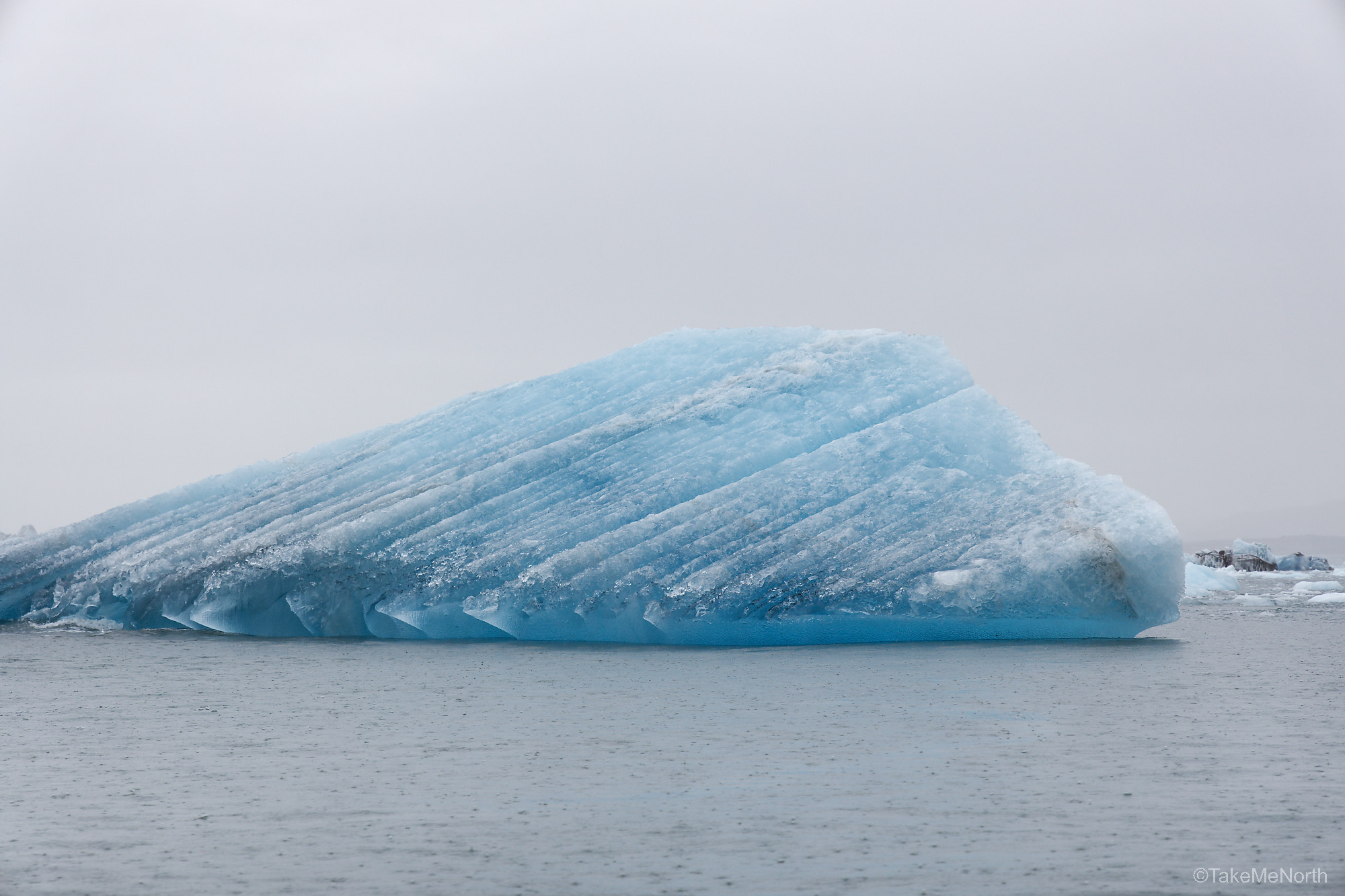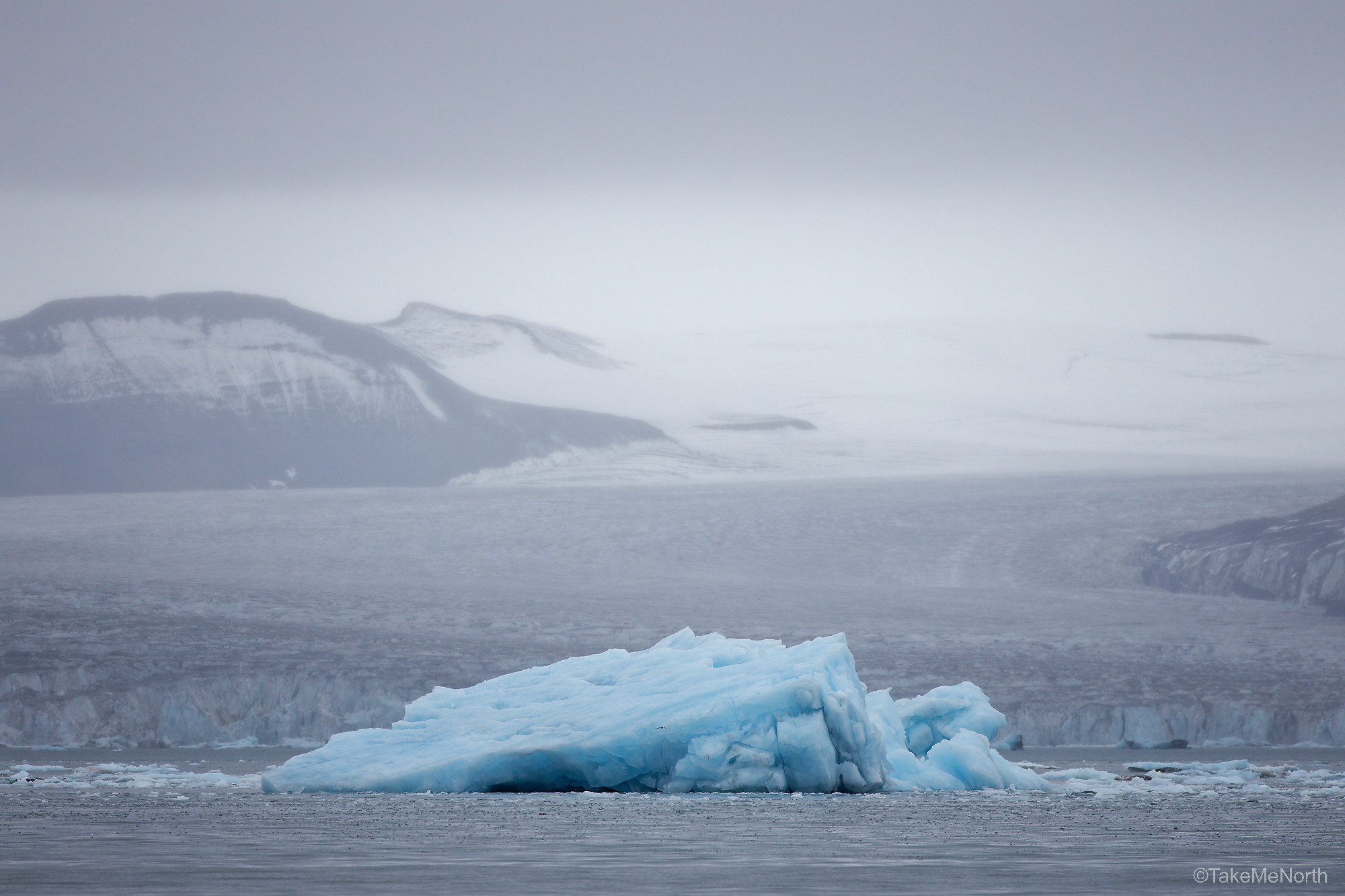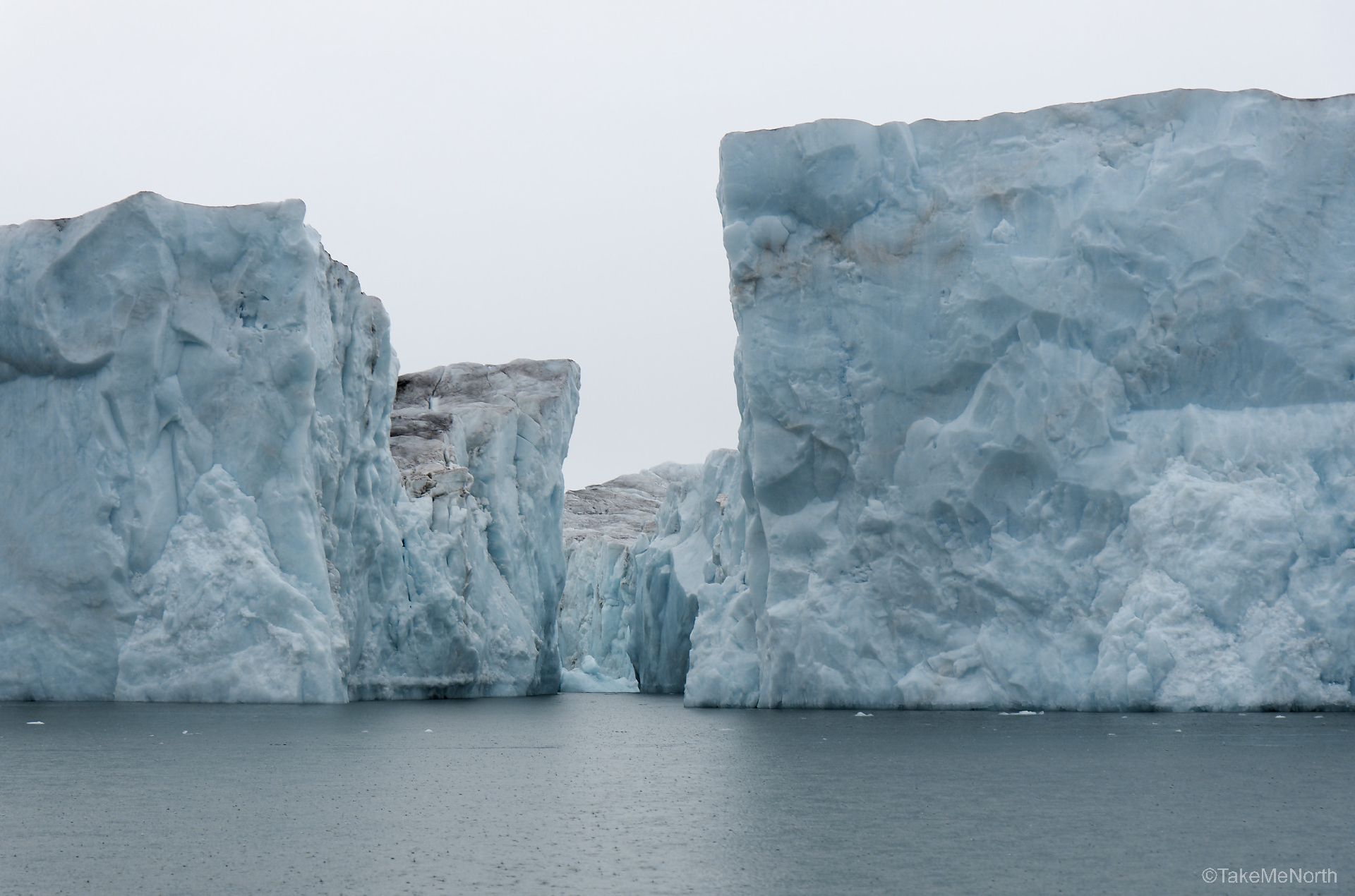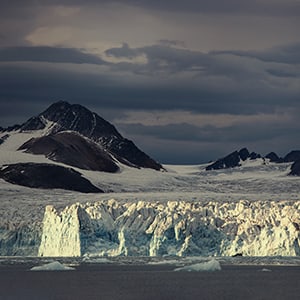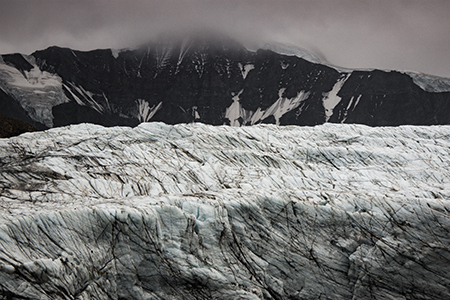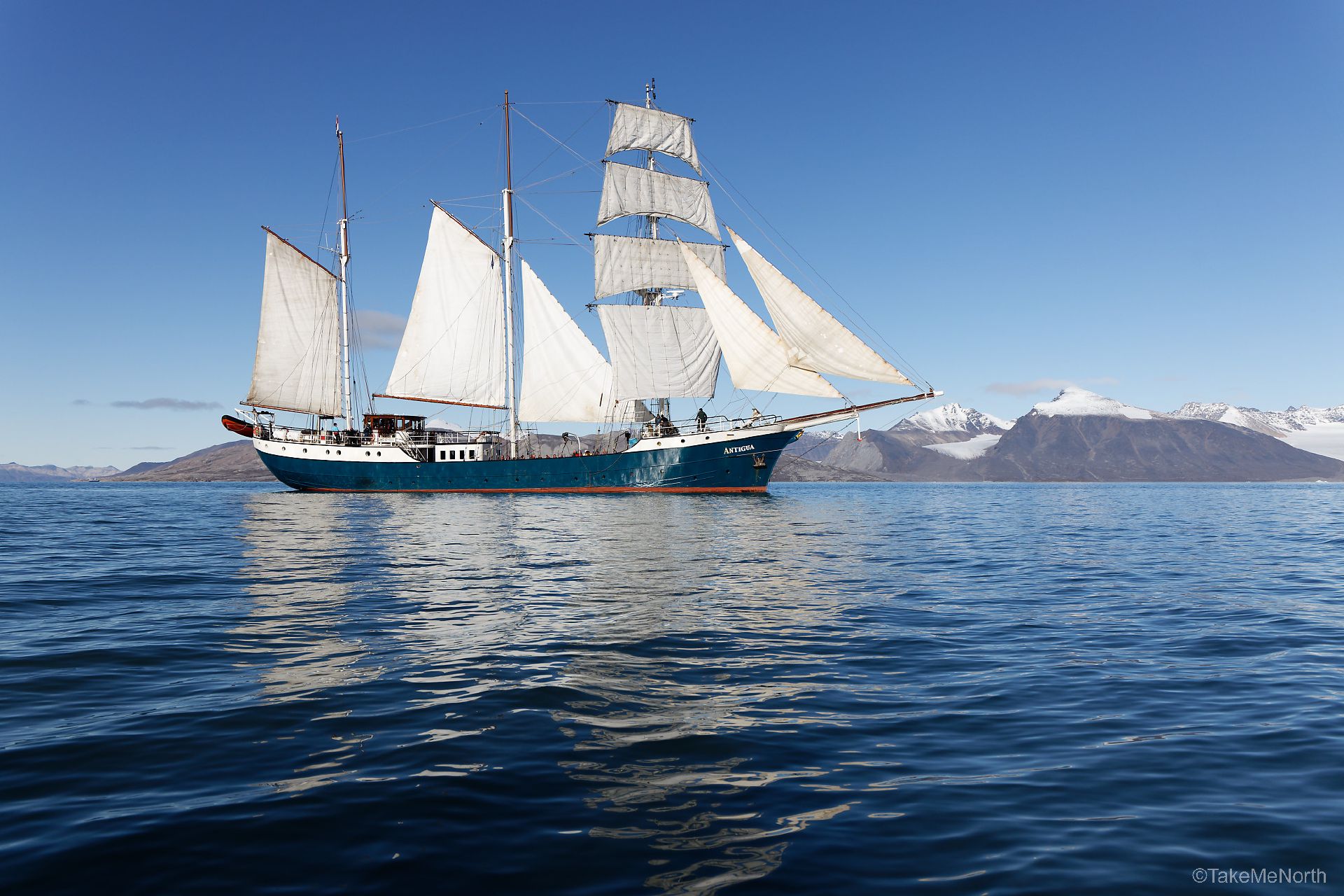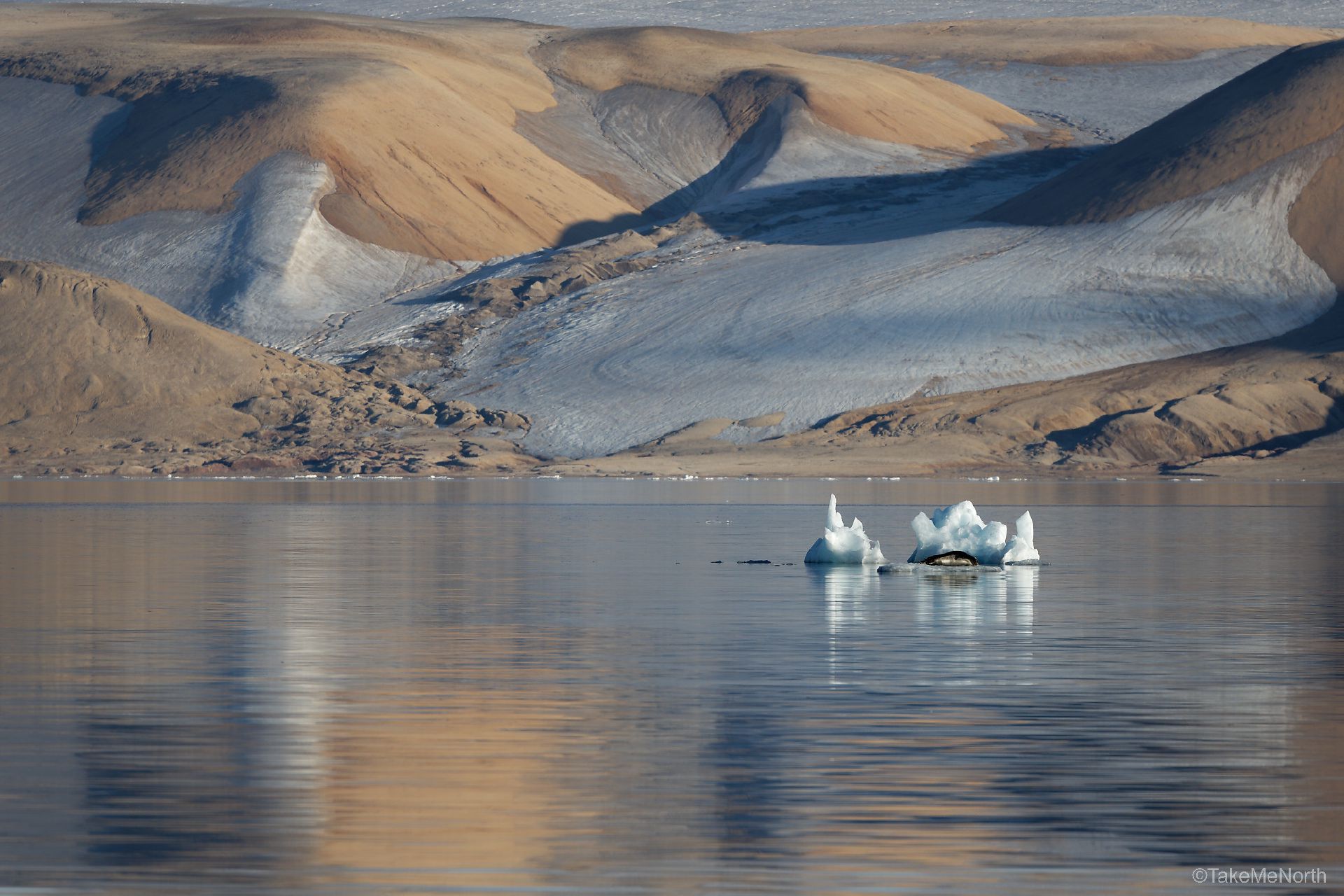Negribreen is a tidewater glacier located on the eastern coast of Spitsbergen. It is part of the largest glacier system on the main island of Spitsbergen and calves into Storfjorden, where the icebergs slowly drift southward in the sea currents. Its calving cliff is almost 20km wide.
While the glacier front ends in Storfjorden, the whole glacier is resting on the ground. When large pieces of Negribreen break off, they often first have to slide through the muddy seabed for a considerable distance before they finally float free.
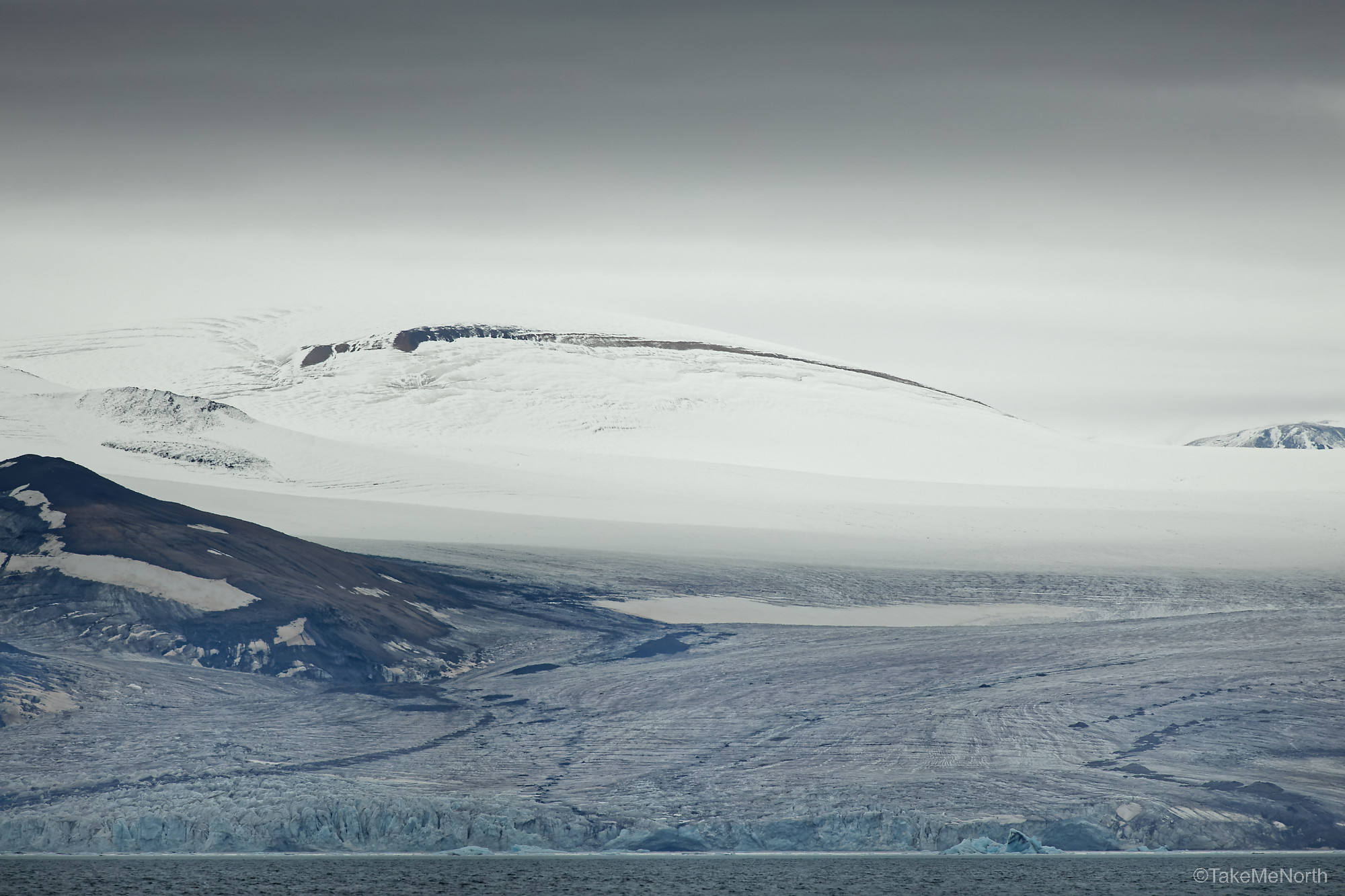
View at Negribreen from Wichebukta
The 2016-2018 Surge
Many of the glaciers at Svalbard are so-called surge-type glaciers. After a long period of steady flow (decades or even centuries), the pressure in the glacier slowly increases. This culminates eventually in a surge: a temporary, drastic increase in the flow speed of the glacier.
The previously recorded surge of Negribreen was in 1935 and 1936, but the glacier began actively surging once more in 2016. Negribreen’s regular velocities measured some centimeters per day, in 2017 it reached horizontal velocities of over 25m per day, making it one of the fastest-flowing glaciers in the Svalbard archipelago. The surge lasted until 2018 and since then, the flow has stabilized at a low level again. Scientists have calculated that this single glacier contributed 0.5-1% to the global sea-level rise in 2017.
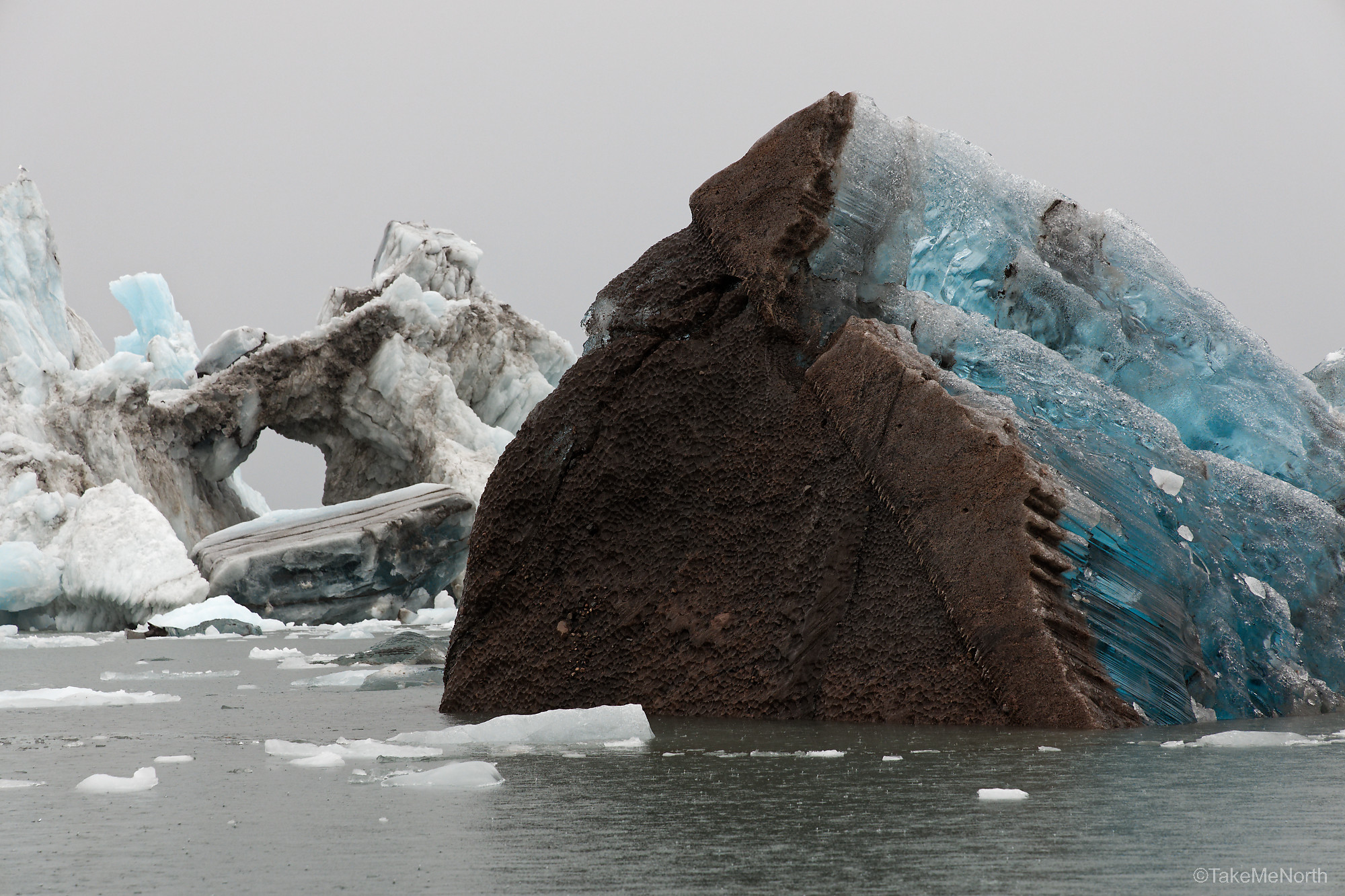
Color palette of an iceberg
How to get to Negribreen
It takes some effort to reach the glacier. In winter, it’s a long day driving a snowmobile from Longyearbyen, which is the nearest settlement. A ride in the darkness that is, since the sun doesn’t rise for 4 months in winter. In summer, it takes 400-500 kilometers of sea voyage from the nearest port (Longyearbyen/Barentsburg) to reach the glacier front (or a helicopter ride for the fortunate ones, or ’lucky ones’ should I say, since tourist helicopter flights are banned in Svalbard).
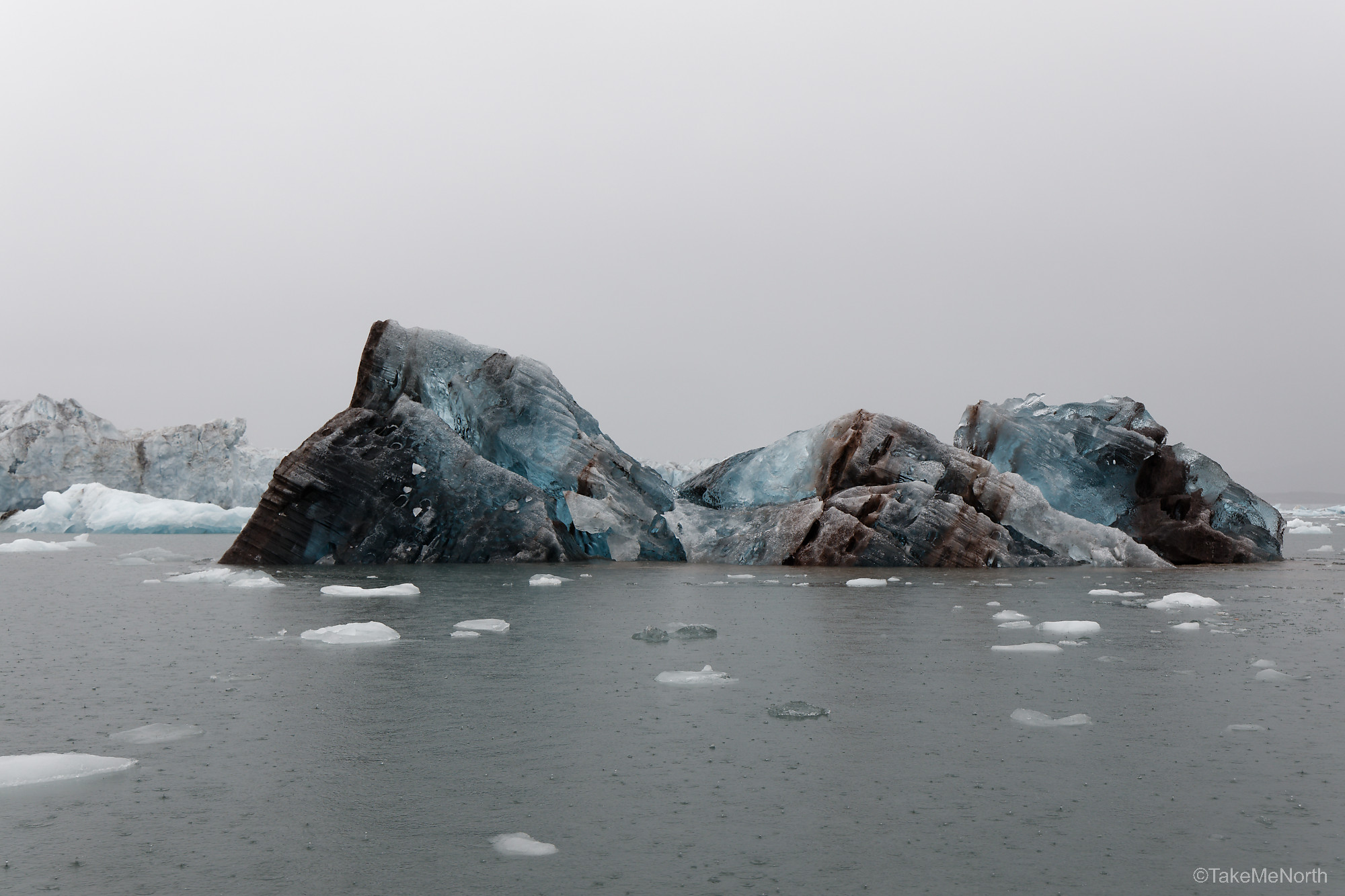
Blue ice and sediments in a recently tumbled iceberg
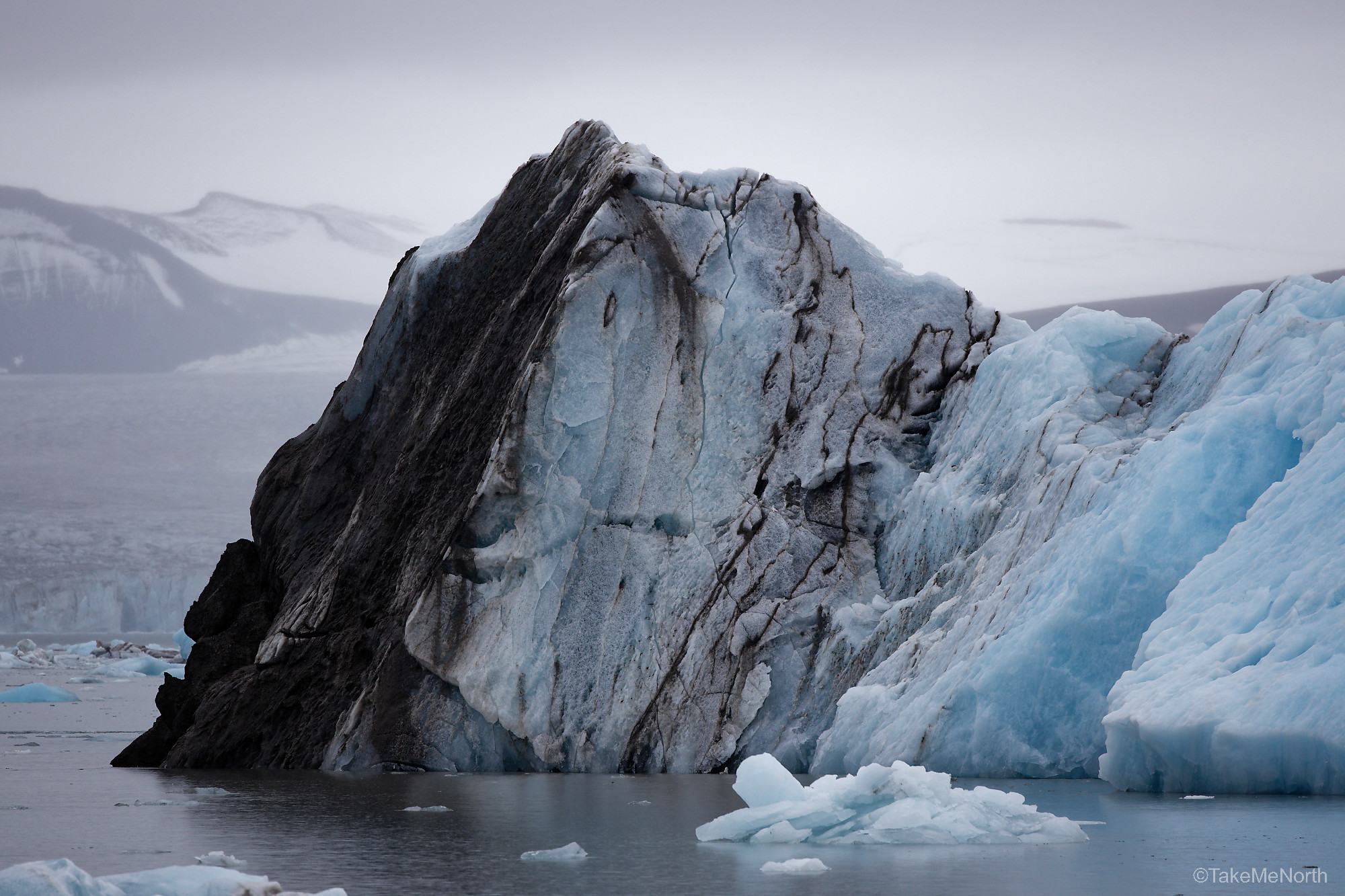
Layers of ice and sediment
